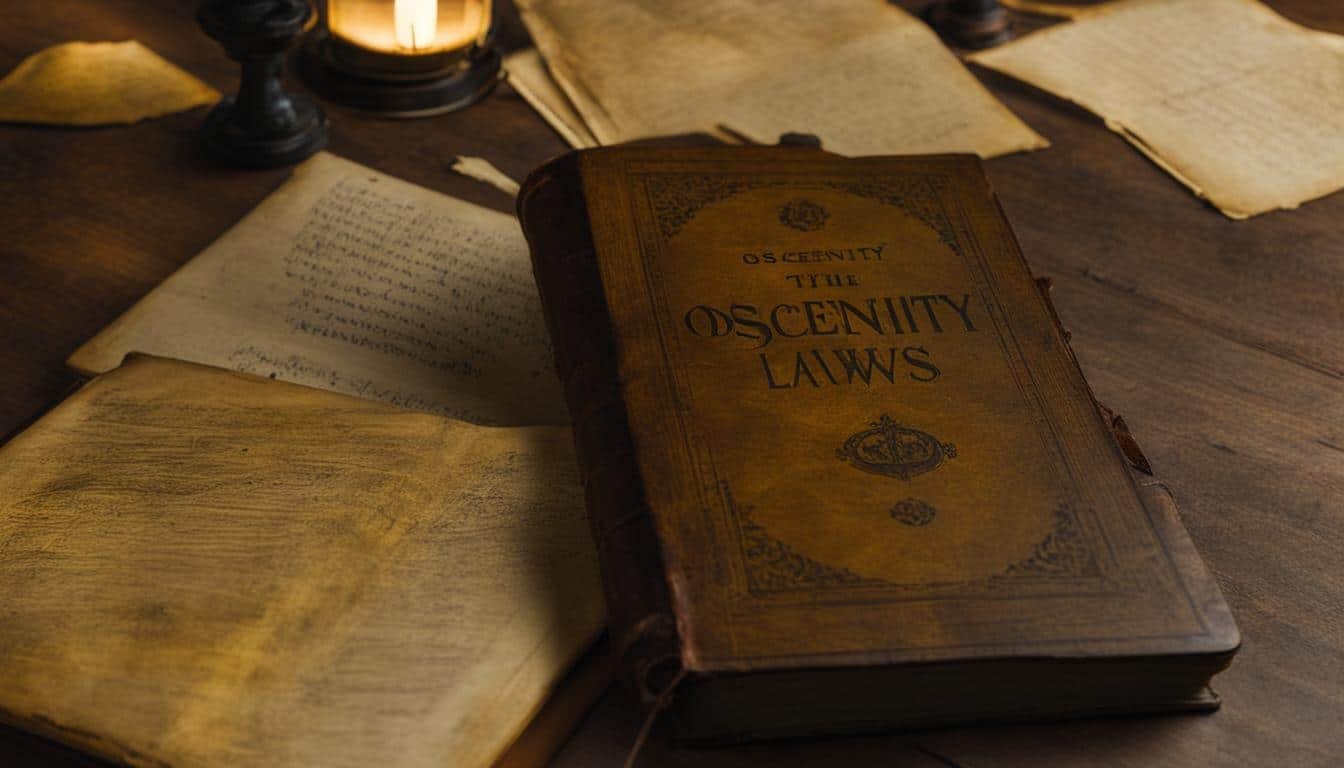Welcome to our in-depth exploration of historical shifts in obscenity laws in the United States. In this article, we will delve into the changing perceptions of obscenity, landmark court cases, and the influential role of the Comstock Act. Join us as we trace the evolution of censorship and its impact on society.
Key Takeaways:
- Obscenity laws have undergone significant changes throughout history, reflecting shifting societal attitudes.
- The Miller test, established in 1973, defines obscenity based on its lack of serious value and appeal to prurient interests.
- The Comstock Act of 1873 was a pivotal moment in American obscenity regulation, targeting the mailing of obscene materials.
- Early examples of obscenity cases include controversial films such as “Carmencita” and “The Kiss,” as well as the legal battles surrounding James Joyce’s novel “Ulysses.”
- Anthony Comstock played a crucial role in shaping obscenity laws, leading to the persecution of advocates like Ida Craddock and Margaret Sanger.
Early Examples of Obscenity Cases
Throughout history, various forms of media have sparked controversy and led to legal battles over their perceived obscenity. These early examples of obscenity cases reflect the changing societal attitudes and standards regarding explicit content. From films to literature, these works challenged the boundaries of what was considered acceptable at the time.
Carmencita
One of the earliest targets of anti-obscenity activists was the 1894 film “Carmencita.” Despite its relative innocence by today’s standards, the occasional tugs at the dancer’s skirt and the visible crinolines underneath were considered daring and inappropriate for the time. This film’s depiction of female sensuality and the exposure of undergarments stirred controversy and raised concerns about its impact on moral values.
The Kiss
In 1896, “The Kiss,” a short film featuring May Irwin and John Rice, faced widespread bans due to its prolonged display of affection. The passionate kiss between the two actors was considered scandalous and deemed too explicit for public consumption. This film’s ban in many places highlighted the increasing scrutiny on depictions of physical intimacy on screen and the growing concern about the influence of such content on society.
James Joyce’s Ulysses
When it comes to literature, James Joyce’s groundbreaking novel Ulysses faced obscenity challenges. Published in 1922, Ulysses pushed the boundaries of explicit content with its frank depiction of sexuality and use of explicit language. These controversial elements led to legal battles and the book’s ban in the United States until the mid-1930s. The censorship and subsequent debates surrounding Ulysses highlighted the tension between artistic freedom and societal norms.
| Obscenity Case | Year | Medium |
|---|---|---|
| Carmencita | 1894 | Film |
| The Kiss | 1896 | Film |
| James Joyce’s Ulysses | 1922 | Literature |
These early examples of obscenity cases provide insight into the evolving societal attitudes towards explicit content. They demonstrate the struggle between artistic expression, freedom of speech, and the desire to maintain moral standards within society. As technology and cultural norms continue to evolve, the definition of obscenity and its legal implications will remain subjects of ongoing debate.
Impact of Anthony Comstock and the Comstock Act
In the late 19th century, Anthony Comstock emerged as a prominent figure in the regulation of obscenity in the United States. His efforts led to the passage of the Comstock Act in 1873, which aimed to prevent the distribution of obscene materials through the mail.
Under the Comstock Law, individuals like Ida Craddock and Margaret Sanger faced persecution for their advocacy of sexual education and reproductive rights. Ida Craddock, for instance, endured imprisonments and tragically took her own life due to the legal battles she faced.
Margaret Sanger, on the other hand, challenged the Comstock Law in court. She argued for the legality of birth control devices for medical purposes and achieved a significant victory, paving the way for advancements in reproductive rights.
Although the Comstock Law remains officially active today, it is largely unenforced. However, concerns persist about its potential use for censorship purposes. The impact of Anthony Comstock and the Comstock Act on the regulation of obscenity in America cannot be underestimated, as it shaped the landscape and set the stage for changing perceptions of censorship.
Source Links
- https://time.com/4373765/history-obscenity-united-states-films-miller-ulysses-roth/
- https://www.pbs.org/opb/historydetectives/feature/indecency-laws/index.html
- https://scholarship.law.unc.edu/cgi/viewcontent.cgi?article=1267&context=falr






